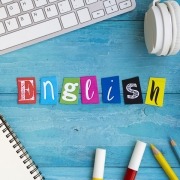3 Things To Know When German Is Your Target Language
Translating from any source language into German should always yield a result that appears as though the source document was, itself, written in German originally. Damage on a technical and legal level are real issues that can occur if the translation style is inappropriate or is wrongly translated (mistranslated), affecting both the translator’s and the company’s credibility.
Go confidently into your German translation process knowing these 3 basic tips.
Germany Is The 3rd Largest Economy Worldwide
What this means is, there is a solid foundation in place for market growth. This is especially valid if you’re in a technical business. In the European Union, German is the second most widely spoken language. In fact, most of the world’s important texts are written in this language; Documents such as:
- Literature
- Theology Texts
- Medicinal Texts
- Engineering Texts
- And History Texts
Germany is committed to innovation at such a degree that two-thirds of the world’s international affairs take place there. Germany is a strong and solidly build competitor in technology. To put that all into perspective, Germany’s .de high-caliber domain extension is second, only to the .com domain.
Be Aware Of Any Technical Translation Limits
Technical Translations, meaning manuals and user guides, are typically proofread, in the source language, by the translator themselves. The reason for this is that there needs to be a clear understanding of content, context, and terminology before a valid translation can take place. This will help with errors or inconsistencies at any point in the translation. If your LSP finds proofing the source document problematic, re-define the limits and parameters of the work he/she/they will do for you.
A big issue for English source to German targets is that the technical information must be adapted to the markets in Germany in terms of format (dates and numbers) and style, which would make this the responsibility of the translator.
Problems You May Encounter When Translating Into German
- Altering numbers, currency, and date formatting
- Following industry standards for the target language (German, in this case)
- Determining whether or not certain standards and regulations have a German equivalent to that of the source language
- Maintaining a formal translation into the target language, though the source may be informally written
These potential difficulties are meant to make you aware. It’s far better to go into a translation project knowing what challenges you’ll face, rather than translating in the dark.
Investing in an LSP that can bring your business into the German market is a wise business growth strategy, and can even help you keep your foot in the European market. Contact ITC Translations for a free quote today. We’ll walk you through our process of translating your project from source to target language, with ease.





















Leave a Reply
Want to join the discussion?Feel free to contribute!